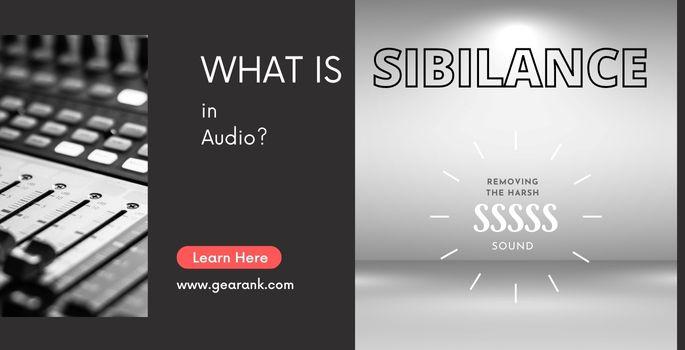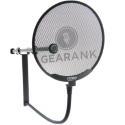What is Sibilance in Audio? The Art of Taming the Hissing

Have you ever heard of something called sibilance? What is sibilance in audio recording, and how do we tame it?
“Sally sells seashells.” It’s full of sibilant consonants and will, as a result, create harsh sibilance in recordings.
This is a frustrating issue that many audio engineers have to deal with. It can be found on every recording and vocal track you come across, and it is something that you should always be on the lookout for.
The presence of a sibilant sound is not something you want on a track. It can be uncomfortable to listen to and very distracting.
Read on to find out what this is and how to eliminate it.
What Is Sibilance In Audio?
Sibilance refers to all the harsh consonant sounds. The most common are Z, T and S sounds.
If you want to get technical, the sounds spoken with these letters produce disproportionate dynamics within the upper midrange frequencies.
The high-frequency range is easily identifiable when wearing headphones. When a mic is used to record, it will pick up sounds of the tongue and teeth, adding to the noise.
A high pass vs low pass filter can be used to control sibilance issues, especially in the upper frequency range.
What Causes Sibilant Sounds?
The harsh sounds from come consonants cause sibilance – Z, T, and the S Sound - are the most common perpetrators.
This is not something that can easily be removed, so there are two primary ways to deal with it, which we will discuss below.
You need to have the correct audio equipment to reduce sibilance, too. Some people tend to make a whistling sound while pronouncing these consonants as well.
How Does Sibilance Affect Audio Signal?
These sounds are much louder than the others and louder at higher frequencies. When something is recorded, this becomes very apparent quickly–and is unpleasant.
These sounds usually occur within the 5 kHz to 8 kHz frequency range.
However, the sounds can occur above and below this range, so there is no hard and fast rule to follow.
Does Sibilance Cause a Hissing Sound?
It can cause hissing, whistling, or other sounds that “pop.” However, it should be noted that it cannot be avoided. It is a normal part of human speech.
This also ties in with singing – you should not try to sing a sure way to reduce sibilant sounds.
While no one wants to hear that sibilant whistle, and you should want to eliminate sibilance, you must be careful.
It would be best to be very careful about getting rid of it. You should not mess with tracks (especially if you are not experienced) too much.
If you do, you risk impacting the rest of the audio – and not for the better.
Will Every Vocal Track Have Sibilance?
Sibilance occurs in every vocal track, but it won't always be substantial enough to be noticeable.
You might have words or phrases that are particularly bad for it, and you must work around them.
Working Around Sibilance
You can do two things to reduce the issue of vocal sibilance in your audio: remove it at the source or in the mix.
Vocal performance and vocal formant can only be changed so much, even in an audio mix.
So, there will always be a degree of this issue when using a microphone, which is the case in many languages.
Many singers will have this issue, and even talking will create it.
Listening to these high frequencies in the audio signal can be painful when you use headphones on loud volumes.
Here are the absolute basics of how you can do this:
-
Removing it from the source – step away from the microphone for words that will create sibilance. When dealing with unwanted plosives, use a pop filter. Do not try to change your speaking or singing style, but work around it. Sibilant sounds are a natural part of vocals and voice, so they cannot be completely removed from music
-
Removing it from the mix with a de-esser – use a de-esser to remove the sibilance from audio recordings. De-essing has been created to eliminate sibilance (just be careful not to over-compress tracks). What it does is apply gain reduction around a limited frequency band, around the offending area. The most convenient to use are software De-essers, but there are also hardware de-essers available.
You can also minimize sibilance problems by adjusting the EQ settings on your vocal sounds. Identify the problematic frequency range and reduce the gain.
Final Thoughts
Sibilance is a pain, but there are things you can do to work around all the harsh sounds you find in audio and recordings.
Often, the best thing you can do with sibilance is find ways to work around the issue since you don’t want to mess with tracks too much.
Have speakers or singers step away from the microphone for words with S, Z, or Ts, and you will immediately get audio with fewer sibilance issues.
Use a de-esser to eliminate that hiss and high-frequency noise.
If you found this What is Sibilance in Audio article helpful, our article on Equalizers is a good supplementary read.












